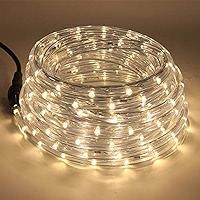Have you ever experienced those unnerving shudders and thumps coming from your car's engine while driving? It could be a sign that something is wrong, or it might just mean that your engine's timing is a little off. So, what can you do about it? Instead of shelling out a hefty sum at an auto repair shop, why not diagnose the problem yourself using a timing light if you have an older model car that uses a distributor?
Fine-tuning the Spark
A timing light is a simple yet powerful tool that helps you adjust when the spark fires from the spark plug, igniting your car's fuel. This adjustment is crucial for ensuring that your engine works at peak power and efficiency. And who wouldn't want that, right?
Read more: What Pool Lights Work With AquaLink?
Different Shapes and Sizes
Timing lights come in various shapes and sizes, ranging from basic pen-shaped tools to more ergonomic and feature-rich pistol grip varieties. The more expensive timing lights tend to offer better readability, even in bright conditions. So, choose the one that suits your needs and preferences.
How It Works
Using a timing light is surprisingly straightforward. Unlike a flashlight, it never runs out of power as long as your car is running and connected to a working 12-volt battery. To get started, simply clamp the timing light's red wire to the battery's positive terminal and the black wire to the negative terminal. Then, attach the signal wire to the Number 1 spark plug wire. If you're unsure which one that is, consult your vehicle's service manual or an online owners' forum.
Read more: How Much Does Pool Light Replacement Cost?
For some timing lights, you may need to attach the unit's spark signal pick-up wire directly to the spark plug tip. However, most modern timing lights easily clip onto the spark plug wire itself. These inductive timing lights detect the electrical jolt each time the spark plug fires, similar to how a doctor uses a stethoscope to determine your body's pulse. When you pull the trigger of the timing light with the engine running, it flashes a beam of light each time the Number 1 plug fires.
Revealing the Timing
Through a phenomenon called the stroboscopic effect, a properly aimed timing light indicates the position of the Number 1 piston in its up-and-down travel when the spark fires. Representatively, the timing of the spark is measured in degrees, indicating how far the crankshaft has rotated relative to the Number 1 cylinder's piston at top dead center (TDC) of the compression stroke.
Read more: Top 5 Best Batteries For Solar 2024
To determine the timing, some vehicles have degree marks and numbers on the crankshaft pulley, with a mark next to it representing TDC. The timing light freezes the motion of the pulley, allowing you to see how many degrees before or after TDC the spark is firing. By manipulating the distributor cap, you can adjust the timing of the spark delivery. However, be aware that timing marks can be found on the flywheel or fan pulley in certain vehicles, and they might even be reversed. So, consult your vehicle's manual before proceeding.
Adjusting the Timing
There are instances when you might want the spark to fire earlier than the piston reaching TDC (advanced timing). Conversely, if you're experiencing excessive knocking, it might be better to have the spark ignite the fuel slightly after the piston reaches TDC (retarded timing).
To determine the proper timing specifications for your vehicle, refer to the Vehicle Emission Control Information Label (usually found on the underside of the hood or along a fender well) or consult a service manual specific to your vehicle.
These instructions provide a general understanding of how timing and a timing light work. Depending on your vehicle's quirks and the timing light you use, what you see under the hood may differ. For more advanced procedures, such as adjusting the vacuum timing, consult your vehicle's service manual and the directions that came with your timing light. Remember, any aftermarket equipment you install, like non-standard spark plugs or spark plug wires, could result in inaccurate readings.
Frequently Asked Questions
Q: Can I use a timing light on newer cars without distributors?
A: No, newer cars with distributorless ignition systems use a computer to control the ignition process, making a timing light unnecessary.
Q: How do I know if my engine's timing is off?
A: Symptoms of incorrect engine timing include knocking sounds, reduced power, poor fuel efficiency, and difficulty starting.
Q: Is it possible to adjust the timing without a timing light?
A: While it is technically possible, using a timing light ensures accuracy and makes the adjustment process much easier.
Q: Can I use a timing light on any type of engine?
A: Timing lights are primarily used on gasoline engines with spark plugs. It is not typically used on diesel engines or engines with different ignition systems, such as direct ignition systems.

